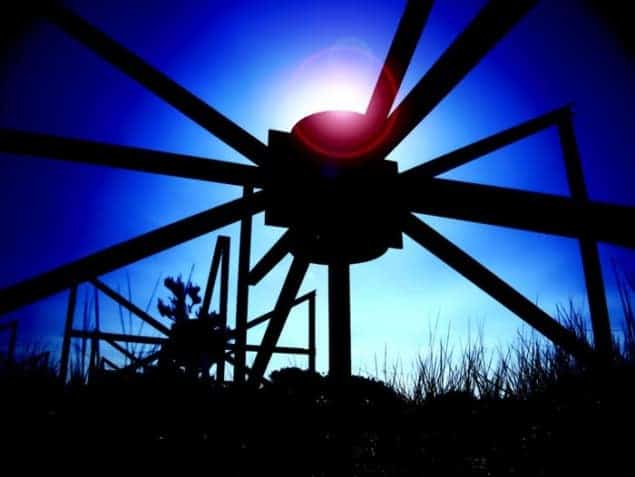
The most powerful low-frequency radio telescope in the southern hemisphere – the A$51m (£30m) Murchison Widefield Array (MWA) – has started its search for signals from the first billion years of the universe’s life, the last unexplored epoch. Located at the Murchison Radio-Astronomy Observatory in a remote, radio-quiet region of Western Australia, the MWA is the first of three Square Kilometre Array (SKA) precursor telescopes to be operational.
The MWA consists of 128 aperture arrays – each comprising 16 antennas – spread out across an area of seven square kilometres. It detects signals between 80 and 300 MHz and has an unparalleled field of view of thousands of square degrees that will enable it to rapidly image the entire southern sky. Developed by an international consortium of 13 institutions in four countries, the MWA’s launch is the culmination of nine years of preparation.
Hot topics in astrophysics
With no moving parts, the MWA can be controlled remotely and data that are gathered by the telescope will be transmitted 800 km via a dedicated optical-fibre data link for processing in Perth. In one of nine inaugural research programmes, the MWA will search for the radio signature of hydrogen emitted during the first billion years of the universe’s life. Known as the era of reionization, the first stars and galaxies formed during this time, but it remains largely unexplored. “This is one of the hottest topics in global astrophysics,” says Steven Tingay, director of the MWA and an astronomer at Curtin University in Perth.
In another project, Martin Bell, astronomer at the University of Sydney, is leading a survey that will use monthly snapshots to observe the dynamic behaviour of supermassive black holes in the southern sky and look out for new, previously undetected classes of objects. “We’ve never done anything as wide or as frequent as this. In some sense, we don’t really know what we’re going to find,” says Bell. The first results from the new telescope are expected by the end of the year.
Sharing data
The vast quantities of data produced by the MVA are being processed at the Pawsey Centre for supercomputing in Perth. According to Andreas Wicenec of the nearby University of Western Australia, 400 Mbyte/s of data are currently being processed by the centre. “The technical challenge isn’t just in saving the observations but how you then distribute them to astronomers from the MWA team in far-flung places,” says Wicenec.
Sharing is currently done via two links – one with MWA colleagues at the Massachusetts Institute of Technology in the US and the other with team members at the Victoria University of Wellington in New Zealand. A link to MWA collaborators in India is planned for the future. The Pawsey Centre will also provide computing facilities for another SKA precursor, the Australian Square Kilometre Array Pathfinder (ASKAP).



